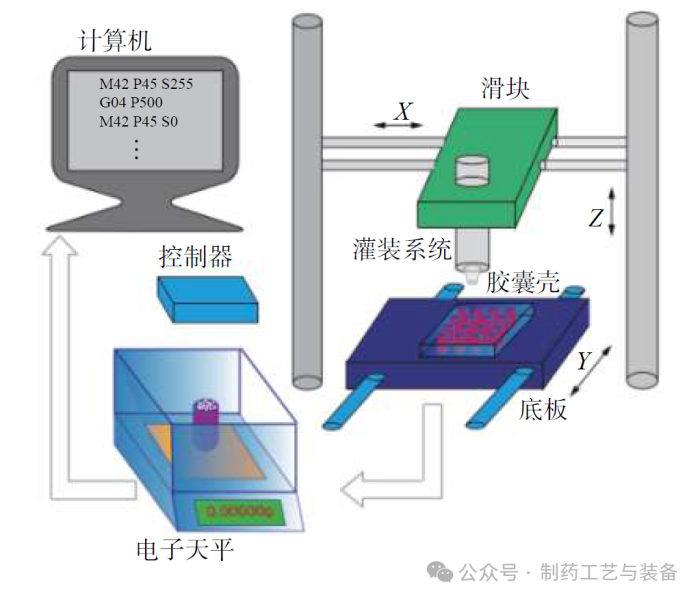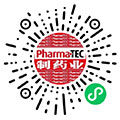用于胶囊的粉末微量灌装技术
Part
1
1.1
实验设备

图1 振动驱动粉末灌装系统示意图
1.2
实验材料

表1 吸入级乳糖样品物性
1.3
样品制备与处理
1.4
灌装剂量分析
Part
2
2.1
流量控制机理
2.2
灌装剂量均一性

图2 累加剂量与下料时间的关系

图3 Lactohale®100 单剂剂量分布

表2 不同样品目标剂量为5.5 mg的灌装结果

图4 气泡和阻塞现象对Respitose®ML003 单剂剂量分布的影响
2.3
振动电压对粉体平均灌装剂量的影响

2.4
振动时间对粉体平均灌装剂量的影响

Part
3
参考文献
[1]FAULHAMMER E, LLUSA M, RADEKE C, et al. The effects of material attributes on capsule fill weight and weight variability in dosator nozzle machines[J].International Journal of Pharmaceutics, 2014, 47(1/2):332–338.
[2]LLUSA M, FAULHAMMER E, BISERNI S, et al. The effects of powder compressibility, speed of capsule filling and pre-compression on plug densification[J]. International Journal of Pharmaceutics, 2014, 471(1/2): 182–188.
[3]EDWARDS D. Applications of capsule dosing techniques for use in dry powder inhalers[J]. Therapeutic Delivery,2010, 1(1): 195–201.
[4]STEGEMANN S, KOPP S, BORCHARD G, et al.Developing and advancing dry powder inhalation towards enhanced therapeutics[J]. European Journal of Pharmaceutical Sciences, 2013, 48(1/2): 181–194.
[5]DANIHER D I, ZHU J. Dry powder platform for pulmonary drug delivery[J]. Particuology, 2008, 6(4):225–238.
[6]PODCZECK F. The development of an instrumented tampfilling capsule machine I: Instrumentation of a Bosch GKF 400S machine and feasibility study[J]. European Journal of Pharmaceutical Sciences, 2000, 10(4): 267–274.
[7]PODCZECK F, NEWTON J M. Powder filling into hard gelatine capsules on a tamp filling machine[J].International Journal of Pharmaceutics, 1999, 185(2):237–254.
[8]NEWTON J M. Filling hard gelatin capsules by the dosator nozzle system--is it possible to predict where the powder goes? [J]. International Journal of Pharmaceutics, 2012,425(1/2): 73–74.
[9]LU X, YANG S, ChEN L, et al. Dry powder microfeeding system for solid freeform fabrication[C]//International Solid Freeform Fabrication Symposium, 2006: 636-643.
[10]BESENHARD M O, KARKALA S K, FAULHAMMER E, et al. Continuous feeding of low-dose APIs via periodic micro dosing[J]. International Journal of Pharmaceutics,2016, 509(1/2): 123–134.
[11]LI Z Q, YANG S F. Nanobiomaterials library synthesis for high-throughput screening using a dry powder printing method[J]. Nano Life, 2012, 2(1): 1250006.
[12]MATSUSAKA S, URAKAWA M, MASUDA H. Microfeeding of fine powders using a capillary tube with ultrasonic vibration[J]. Advanced Powder Technology,1995, 6(4): 283–293.
[13]LU X S, YANG S F, EVANS J R G. Studies on ultrasonic microfeeding of fine powders[J]. Journal of Physics D:
[14]Applied Physics, 2006, 39(11): 2444–2453.BESENHARD M O, FAULHAMMER E, FATHOLLAHI S, et al. Accuracy of micro powder dosing via a vibratory sieve-chute system[J]. European Journal of Pharmaceutics and Biopharmaceutics, 2015, 94: 264–272.
[15]CHEN X L, SEYFANG K, STECKEL H. Development of a micro dosing system for fine powder using a vibrating capillary. Part 1: the investigation of factors influencing on the dosing performance[J]. International Journal of Pharmaceutics, 2012, 433(1/2): 34–41.
[16]CHEN X L, SEYFANG K, STECKEL H. Development of a micro-dosing system for fine powder using a vibrating capillary. Part 2: the implementation of a process analytical technology tool in a closed-loop dosing system[J].International Journal of Pharmaceutics, 2012, 433(1/2):42–50.
[17]SCHULZE D. Powders and bulk solids: Behavior,characterization, storage and flow[M]. Berlin: SpringerVerlag, 2008.
[18]FAULHAMMER E, FINK M, LLUSA M, et al. Low-dose capsule filling of inhalation products: Critical material attributes and process parameters[J]. International Journal of Pharmaceutics, 2014, 473(1/2): 617–626.
[19]HENDRICKS C D. Charging macroscopic particles[M]//MOORE A D. Electrostatics and Its Applications. New York: John Wiley and Sons, 1973.
[20]FENG J Q, HAYS D A. Relative importance of electrostatic forces on powder particles[J]. Powder Technolog, 2003, 135/136: 65–75.
[21]MATSUSAKA S, KOBAYAKAWA M, MIZUTANI M, et al. Bubbling behavior of a fluidized bed of fine particles caused by vibration-induced air inflow[J]. Scientific Reports, 2013, 3: 1190.
撰稿人 | 刘环、陈岚、李宗齐、陈东浩 上海理工大学学报
责任编辑 | 胡静
审核人 | 何发
邵丽竹
何发
热点文章
-
几种典型制药工艺流程图分析
2025-10-11
-
阿司匹林合成工艺及装置改进
2025-10-21
-
辐照辐照灭菌技术在制药行业中的应用灭菌技术在制药行业中的应用
2025-10-11
-
中药颗粒剂生产中的现代化工艺改造
2025-11-04
-
《药包材GMP(2025)》与药品GMP深度对比:核心差异、新增要点与实施指引
2025-11-25
-
2025年50家头部药企的竞争格局与核心趋势分析
2025-10-21
-
一文看懂新药研发到上市的全流程
2025-11-25
-
基于CFD仿真技术的灌装机充氮装置设计优化
本文以某制药产线的灌装机设备为研究对象,采用计算流体动力学(CFD)仿真技术对充氮装置的充氮性能进行分析,并结合分析结果对氮幕结构进行了优化设计。随后,针对优化方案进行性能仿真验证,结果显示优化后的顶空残氧量降低至0.252%。为了进一步验证优化方案的实际效果,将优化方案应用于实际产线进行性能测试,测得的顶空残氧量为0.68%,这一结果满足了小于1%的要求,表明其充氮保护性能已达到国际先进水平。
作者:王志刚、刘依宽、刘佳鑫
-
药品密封性检测 :用户需求与优化
-
可控冻融系统在生物原液上的应用
-
人用疫苗生产数字化转型
-
药包材生产质量管理的进阶策略
-
药厂洁净区域风量和压差的控制策略













评论
加载更多